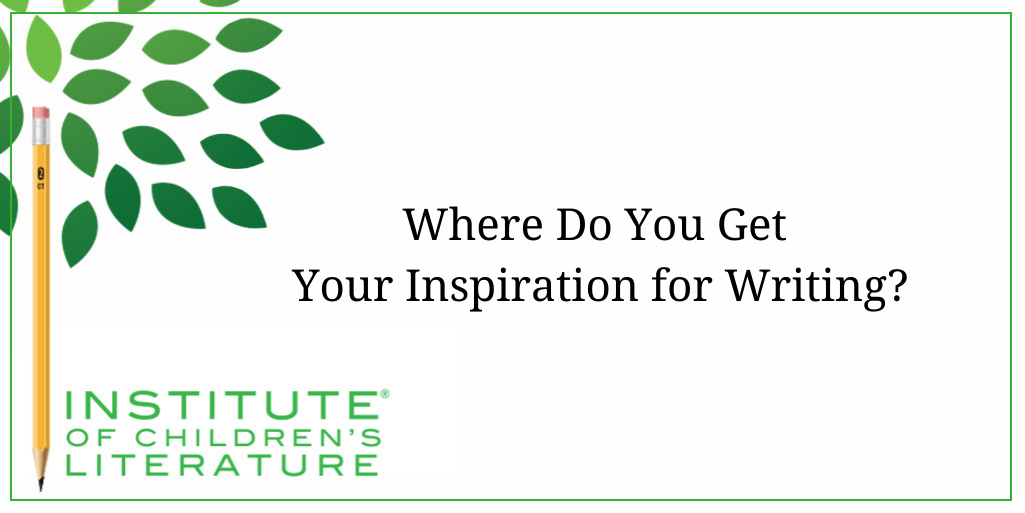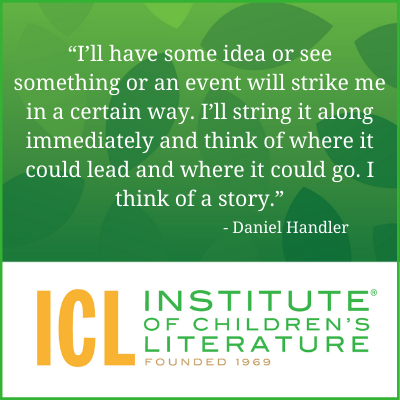
5 Ways Writers Can Prep for 2025 Goal Setting
Before we roll on to the new writing year, let’s harness our optimism for the blank slate before us and prepare for our 2025 Goal Setting just for writers.

We teach our students how to write and get published!
View our Course Catalog >
Novel writers are often asked where they get their inspiration for writing. Sometimes the person is asking what inspired a specific story, and sometimes the person is talking about inspiration, in general. In fact, inspiration is all around it. It’s like air. We know it’s there but we often forget to pay attention to it (until we begin choking for the lack of it). The real key to getting inspiration for writing is less about finding it (since it’s right there, right where you are) and more about recognizing it and letting it find us.
Have you ever seen a cat stare with rapt fascination at a blank wall? I like to see that as a cat recognizing the inspiration in a blank wall. You see, cats are endlessly curious. You give a cat a closed paper bag, and he’ll have to know what is inside. If a cat finds a gap under a door, he has to stick his paw under there, just in case there is something wonderful on the other side. As writers, we need to be the cat. We need to rediscover wonder and curiosity. And we need to rediscover optimism. Optimism drives that urge to stick a paw under a door every bit as much as curiosity does. The cat is certain that he not only wants to know what is on the other side, but also that whatever it is, it’s amazing. As writers, we need to believe we can still be amazed.
These days, we all have such a deluge of information coming at us, we’ve learned to let it wash over us and affect little change, instead of allowing it to inspire us. We begin to see it as distraction, as getting in the way of the things we need to do. After all, we can’t notice everything, and it feels easier to notice nothing. But if we fall into the habit of not paying attention, we’re going to miss so much inspiration out there. So the first step is to give yourself permission to wonder about the things you hear. Give yourself permission to ask questions about the things you see. After all, inspiration is rarely about finding answers. Inspiration for writing is about finding the questions to ask.

If you’re not up for a trip to your local museum, how about a dip into an interesting documentary? My husband loves documentaries, about absolutely anything, and they are full of inspiration. Oftentimes documentaries are all about looking more closely at things, and that’s what inspiration does as well. And documentaries have the added bonus of letting me be inspired while sipping my tea and wearing my jammies. Check out what documentaries may be easily and freely available to you. And let yourself ask question even while the documentary unfolds. Documentaries tend to be full of heroes and villains (and sometime people who are both). There are few more easily consumed wells of inspiration. Don’t limit yourself to the documentaries you expect to find most interesting. You’d be surprised at how much you can be inspired by a documentary on regional cemeteries or the origin of breakfast cereal. The key is to expect to find inspiration for writing there and never be afraid to let your mind wander into new places with new questions while you watch.
I find documentaries are a great place to discover characters, but that’s not the only place. Characters exist all over. Every time I leave the house, I’m open to running into characters. It’s why people watching is almost a universal activity for writers. We eavesdrop on the people near us in restaurants. We notice the wayward children in grocery stores. We find villains in the rude people waiting in line at shops.
Again, the key is being open to wonder. Notice the person dressing oddly and imagine your own story of why that woman chose to wear what is clearly a massively oversized man’s winter coat. Is it the coat of her late husband? Is it the coat of her present lover, who wrapped her up in it only moments before you saw her? Notice the toddler whose winter hat sports ears and imagine what life would be like if that same child were ten years older and his mom still bought him knit hats with ears. Does he love them? Why? Does he hate them? Why? And how is it that he still gets them if he hates them? Is he afraid to ask his mom to stop because he knows it’ll hurt her feelings? The more you let your mind wonder, the more it will provide you with stories.
I’ll also play a similar game sometimes by leafing through stock image sites, looking at pictures of people and imagining a few things about them. The young woman standing next to the pie chart with the bright smile. Does she have a pet? What kind? Or why not? Did she like how her hair looked that day? What does she do at the end of a long day, when she’s finally home? Does she kick off her heels, and pad around her apartment barefoot? What does she have for dinner? Be as full of questions as an eager toddler, and you’ll find the questions open the tap of inspiration.
Remember the stock image site? Consider looking online for one and scrolling through until one of the photos catches your attention. Is it a landscape or are there people in the photo? If it’s a landscape, imagine yourself in that place, right now. Then with the photo in front of you, begin writing about your experience of being there. Is it cold? Warm? What would you be wearing? What do you smell there? In your mind, turn in the direction away from where the photo is pointing and imagine what you weren’t able to see until you turned. Walk that way and continue freewriting about what you’re experiencing. Include as much sensory details as possible. And don’t reject any idea.
So imagine you picked a beach scene because it’s winter and cold and you’re love to be there. The scene showed the waves caught by the photographer in their rush to the white sand beach. In the distance are mountains. And when you imagined breathing in the air, you imagined the smell of a campfire. How odd. You don’t see a fire. But don’t discard the idea, instead, when you turn and walk, follow the scent. With the sensory impressions your imagination provides, begin to build a world bigger than the photo scene. Doing this will give your imagination muscles a workout. Now this might end up only being an exercise that goes no further, but the benefits of it will show in everything you write. Inspiration begets inspiration. So inspiration exercises make you ready to be inspired in the project you truly want to write.
The transition from daily living to wonder will take an act of will on your part. Many of us have learned to focus and get things done. Wonder is distracting and time consuming. But it provides astounding rewards for the writer. So ask yourself, have you closed yourself off from wonder? If so, this could be the time to make the change so inspiration can find you.
With over 100 books in publication, Jan Fields writes both chapter books for children and mystery novels for adults. She’s also known for a variety of experiences teaching writing, from one session SCBWI events to lengthier Highlights Foundation workshops to these blog posts for the Institute of Children’s Literature. As a former ICL instructor, Jan enjoys equipping writers for success in whatever way she can.

Before we roll on to the new writing year, let’s harness our optimism for the blank slate before us and prepare for our 2025 Goal Setting just for writers.

Writers can be thin-skinned when it comes to getting feedback on their work. Let’s look at 4 ways to positively deal with constructive criticism!

Rejection is part of the territory when it comes to being a writer. Today we offer reflection for writers to help redirect your efforts after a rejection.
1000 N. West Street #1200, Wilmington, DE 19801
© 2024 Direct Learning Systems, Inc. All rights reserved.
1000 N. West Street #1200, Wilmington, DE 19801
© 2024 Direct Learning Systems, Inc. All rights reserved.
1000 N. West Street #1200, Wilmington, DE 19801
© 2024 Direct Learning Systems, Inc. All rights reserved.
1000 N. West Street #1200, Wilmington, DE 19801
© 2024 Direct Learning Systems, Inc. All rights reserved.

1000 N. West Street #1200, Wilmington, DE 19801
© 2025 Direct Learning Systems, Inc. All rights reserved.

1000 N. West Street #1200, Wilmington, DE 19801
©2025 Direct Learning Systems, Inc. All rights reserved. Privacy Policy.
5 Comments